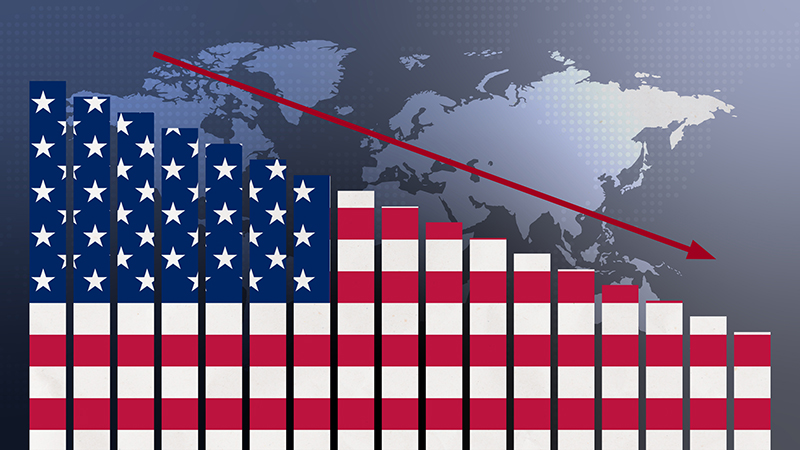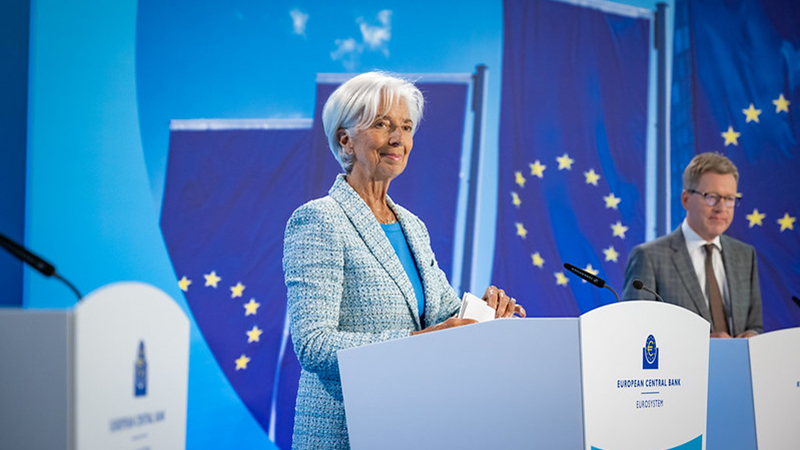The European Central Bank (ECB) has delivered its first interest rate cut since December 2019.
The move to bring the lending rate down 25 basis points to 3.75% from an all-time high of 4% saw the Eurozone become the second major global economy to cut interest rates this week, following on from Canada on Wednesday (5 June).
While today’s rate cut was priced in, industry commentators believe the future trajectory of monetary policy is still uncertain.
See also: Morningstar adds Robeco and Pictet funds to Sustainable Prospects list
Seema Shah, Principal Asset Management chief global strategist, suggests a further rate cut at the next ECB meeting in July may not be on the cards.
“Although today’s decision was fully anticipated, the market will be pondering the fact that the ECB is cutting policy rates into a cyclical economic upturn,” she says. “Inflation has descended meaningfully in the past year and inflation expectations are anchored, justifying the decision to reduce policy restrictiveness.
“The ECB navigated the post-COVID inflation spike successfully and are now able to reap the rewards. Yet, the upward revisions to the ECB’s inflation forecast, as well as the recent upside surprises to wage growth and economic activity, do emphasise the need for a cautious approach to future policy decisions. Lagarde will be careful to avoid pre-committing to a future policy path which, in turn, suggests that a July rate cut is very unlikely.”
Harry Richards, investment manager, fixed income at Jupiter Asset Management, argues that we may be on the brink of a full rate-cutting cycle.
He said:“Weak growth is likely to persist for some time and inflation, which is a lagging indicator, should continue its slow march towards target. Policy is too restrictive at this juncture and as a result further cuts will be required. We do not expect a ‘one and done’ scenario but, instead, believe we are on the brink of a full rate cutting cycle which should help to underpin returns within the fixed income space over the medium term.
“We expect the Fed to follow suit in the coming quarters as the softening of the labour market accelerates, consumer weakness becomes more apparent and shelter inflation fades further. They may also fear unleashing the dollar wrecking ball if they do hold rates higher for too much longer whilst other developed market central banks are easing.”
See also: Tritax EuroBox: No formal offer has been received from Brookfield
Gabriele Foà, portfolio manager at Algebris Investments, added: “The ECB’s tone today regarding future cuts was more open, and the Governing Council chose to say little about the second half of the year. Overall, it seems clear the road to global rate cuts will be long, slow and uncertain.
“The ECB may have started down the rate cutting path, but the Governing Council seems to be taking a patient approach, perhaps once they are clearer on the Fed’s course of action. That inflation and growth expectations have been revised upwards (despite the cut) is indicative.
“We think central banks will not hurry the rate cutting cycle. 2024 growth is not far from its potential in both the US and Europe, and inflation remains above target. We think a rapid cut cycle can be ruled out.
“Rate cuts are not a fixed income investment thesis per se. We see more value in the high-yield component of global credit, which depends less on rates and more on growth. The level of credit spreads is tight compared to the historical average, but there is no shortage of opportunities in select areas.
“In Europe, we see value in financial subordinates and in defensive sectors such as telecom and utilities, especially on the junior side.”











